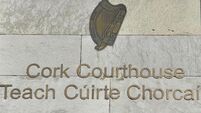Traumatic past buries hope for future
SPRING 1989: A group of young students bends over their spades as they dig in a Siberian forest clearing.
In shallow depressions, they quickly uncover human remains, the skulls all neatly pierced by bullet holes, the work of Stalin’s executioners. All around the small group of diggers, dozens more mass graves stretch into the forest, extending, like the old Gulag Archipelago, from one end of the former Soviet Union’s 11 time zones to the other.
The scene opens David Satter’s It Was a Long Time Ago and It Never Happened Anyway, a sweeping study of how the former Soviet Union’s bloody past continues to poison Russia’s present and threatens to strangle its future.
“I know as one who stood at the edge of that cold pit that a person who sees this, forever becomes different,” recalls one of the student diggers, now a leading liberal politician.
Satter’s point is that too few Russians have been willing to peer into the burial pit of their country’s own not-so-distant past. “Russia today is haunted by words that have been left unsaid,” he writes.
Unlike Germany after the Second World War, post-Soviet Russia was never wracked with collective guilt for the crimes of the old regime. There was no South Africa-style Truth and Reconciliation Commission; there was no opening up of secret-police archives, as there was in East Germany or Hungary.
The closest Russians came to such a self-examination was during the brief phase when Mikhail Gorbachev’s glasnost filled the airwaves and newspapers with harrowing gulag memoirs. In the wake of a KGB-led attempted coup in August 1991, thousands gathered on Lubyanka Square beneath the statue of Felix Dzerzhinsky, founder of the Soviet secret police, and screamed anti-KGB slogans. Fearing that the KGB building might be stormed, city authorities called in a crane to remove the statue.
However, the wave passed. Most ordinary Russians quickly forgot their indignation at the KGB’s crimes as a tide of free-market reforms swept away their savings and their jobs, together with any remaining illusions of imperial greatness. For many Russians, reforms meant not freedom but a slow implosion of life’s possibilities. Small wonder a counter-revolution against glasnost quickly ensued. By the early 2000s, pro-Kremlin political scientist Vyacheslav Nikonov could accurately say that “people are not interested in the past. Any attempt to dig into the past evokes only irritation”.
A clique of liberals and oligarchs had already handpicked Vladimir Putin to succeed Boris Yeltsin as Russia’s president in 1999, with no concern that his KGB background might be a liability. By 2002, Moscow mayor Yuri Luzhkov, a consummate political opportunist, was suggesting that Dzerzhinsky be returned to his old spot. Putin quickly began talking up Russian greatness and as Satter observes, “talk of terror interferes with the return of historical pride”.
The moral schema of Putin’s national revivalism doesn’t work if Stalin is a villain. Since post-Soviet Russia can boast of no historical achievements of global significance, the Kremlin’s ideologues have been obliged to fall back on the USSR’s accomplishments — primarily its victory in the Second World War and its space programme. But in the binary world of propaganda, Stalin the victor of the Great Patriotic War cannot exist alongside the Stalin of the Purges.
By Satter’s estimate, Stalin killed 20 million in peacetime through man-made famines, executions, and the war on the peasantry, known officially as collectivisation. But by 2003, Satter writes, 53% of Russians approved of Stalin and his actions — up from 19% in 1998, thanks largely to the Kremlin’s glorification of the USSR’s Second World War victory, via a revival of grand military parades on Red Square and a new generation of state-sponsored war movies. Putin later ordered a rewrite of Soviet-era textbooks to present Stalin as “a good manager”.
However, what bothers Satter most is that Putin has returned to the megalomaniacal Soviet assumption that the people exist to serve the state rather than the other way around. “Maintaining the governance of a vast territory… calls for vast sacrifices and privations on the part of our people,” Putin said in 2008. “That has been Russia’s 1,000-year history.”
Satter’s message is that Russia cannot hope to reverse its current decline without first coming to terms with the crimes of the Soviet past. Following the great dissident physicist Andrei Sakharov, Satter argues that Russia needs a new, post-totalitarian morality before it can hope to grow.
Unfortunately, the problem he is really talking about is not the Soviet past but a deeper Russian tradition of autocracy. In the 1890s, Anton Chekhov wrote of the struggle to “squeeze out the slave from myself drop by drop”. And it was Count Alexander von Benckendorff, the real founder of Russia’s secret police a century before Dzerzhinsky, who described Russia’s top-down structure like this: “Laws are written for subordinates, not for rulers.”
Still, it’s certainly true that what poisons Russia today is the state’s “disregard for the individual in the face of the need to realise tasks of state”, as Satter puts it. And he rightly points out that in the rush to build capitalism, Russia’s liberals were just as guilty as any of the country’s rulers when it came to trampling individual rights. With the massive protests against rigged elections in the past this month on Moscow’s Bolotnaya Square, cracks have spread through the pedestal of Putin’s power. However, what’s not clear is how “coming to terms” with history could help solve the ingrained contempt of Russia’s rulers for the people they rule.
Over the past decade, Russia’s liberal opposition has got more or less nowhere with its talk of human rights, free speech, and political freedoms. Instead, it’s the messages of anti-corruption blogger Alexei Navalny and environmental campaigner Yevgenia Chirikova that have caught popular imagination.
In the early 1990s, the bones of Stalin’s dead exercised the imaginations of a liberal, post-Soviet generation of Russians, as they pondered what kind of country they wanted to live in. Then they saw their principles and dreams smashed by a tsunami of bandit capitalism — which effortlessly morphed into Kremlin-controlled crony capitalism. Today, those liberal ideals seem as bygone as the gulags’ bones.
Satter’s book is a fine potted history of Russia in the 20th century and the excesses of her new rulers. It would be nice to think that understanding history could save Russia from repeating it.
However, Russia’s latest would-be revolutionaries take their inspiration from the present-day model of normal, non-kleptocratic countries elsewhere. The corruption, arrogance, and impunity of Russia’s ruling elite undoubtedly have ancient roots. But one doesn’t need a deep historical understanding to feel resentment and furious anger.
* (c) 2011 Newsweek/Daily Beast Company. It Was a Long Time Ago and It Never Happened Anyway, by David Satter, is published by Yale University Press.















